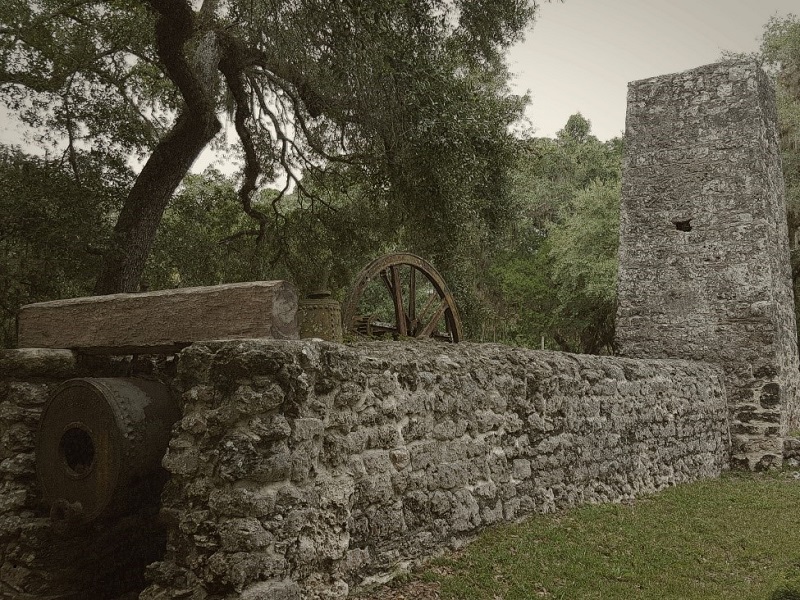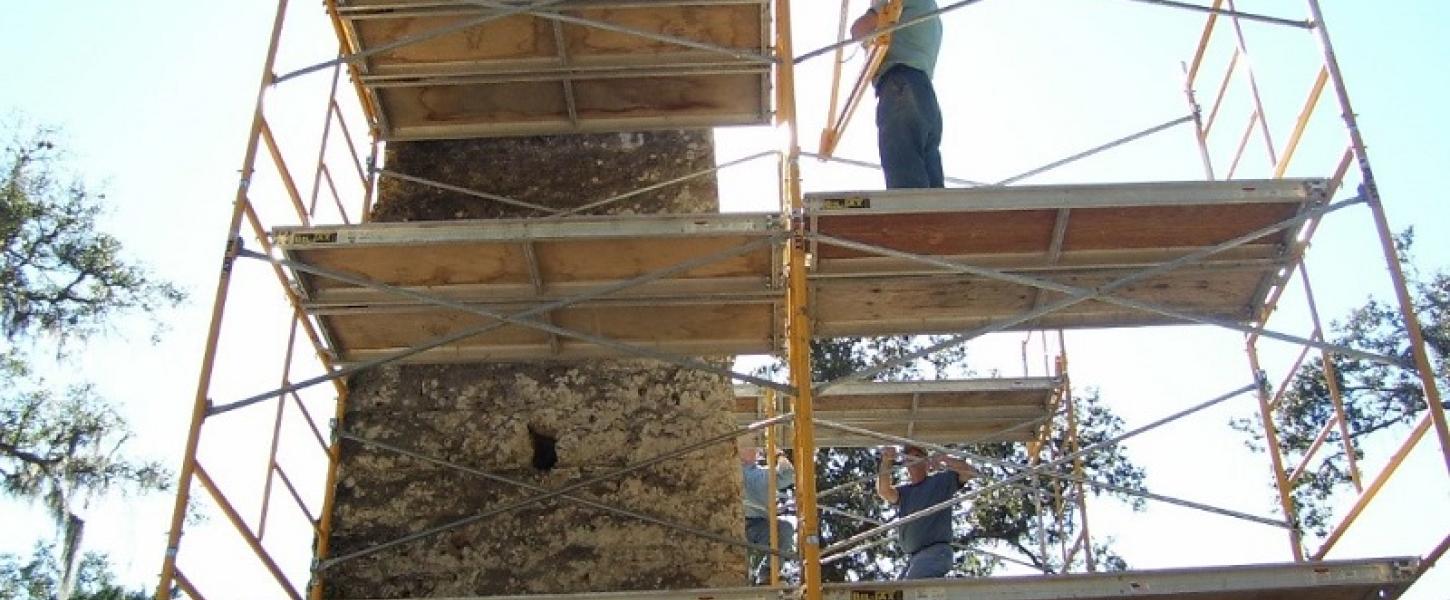
Mill Restoration

Located less than six feet from Yulee Drive, the towering 40-foot lime rock chimney is hard to miss. An essential marker of the Yulee Sugar Mill Ruins site, the chimney is just a small part of the mill and associated plantation that once stood here. One hundred fifty years of weather, in conjunction with the addition of a road and modern-day cars and trucks, has created vibrations that compromise the integrity of the mill structure.
In 1851, the same year that author Herman Melville published "Moby Dick," a sailing ship transported the 35-foot long iron boiler and machinery that powered Yulee’s sugar mill from New York to Florida. When the American Civil War broke out in 1861, President Abraham Lincoln issued a proclamation to blockade the southern ports. Union soldiers waited at the mouth of the Homosassa River to capture any goods and keep Yulee’s sugar and citrus from helping the Confederate war effort. All the while, the shimmering white chimney stack was fully functional and belching out clouds of wood smoke, turning raw sugarcane into syrup. The intricate network of rivers and canals along this section of Florida’s coast allowed runners to slip by the blockades, and the mill continued to operate.
In May of 1864, Union blockaders ventured up the Homosassa River, hoping to find and destroy the sugar mill. They didn't find the mill, but they did find a large stock of supplies near David Yulee’s home on Tiger Tail Island. The Union soldiers burned Yulee's house, along with one of the largest libraries in the South, but the mill remained intact.

Over the years, the Yulee sugar mill ruins site passed through many different hands. The Florida Park Service acquired the ruins in 1970. In 1997, the Gulf Archaeology Research Institute conducted an archaeological survey to determine the condition of the mill site, as previous attempts to repair the mill had failed. To successfully preserve the structure, the Florida Park Service partnered with the National Park Service and began masonry stabilization efforts. New technologies such as laser scanning are used for stratigraphy, the analysis of the position of layers of archaeological remains. Laser scanning allowed us to precisely determine the amount of tabby (a type of concrete made from oyster shells) necessary to restore the mill structure and walls.

An essential element of the Florida Park Service's mission is to restore Florida’s natural and cultural resources. Restoration helps protect a physical reminder of history, one that shows how the town of Homosassa is connected to the Civil War, the citrus industry, railroads and the life of businessman and senator David Levy Yulee.